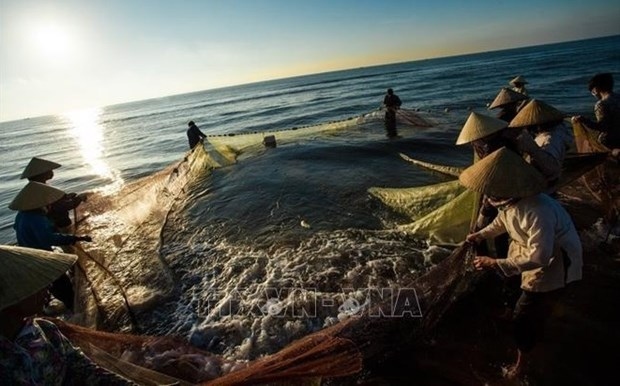Removal of fishing “yellow card” an urgent task: Deputy PM
Vietnam has been doing its utmost to fight Illegal, Unreported and Unregulated (IUU) fishing in an attempt to lift the European Commission (EC)’s “yellow card” warning against its seafood exports and avoid a “red card” which could lead to a trade ban.
Removing the “yellow card” is a very urgent task, Deputy Prime Minister Le Van Thanh told a meeting of the National Steering Committee on IUU Fishing last month, given that officials from the EC are scheduled to visit Vietnam at the end of October to check measures against IUU fishing, along with fishery infrastructure.
Thanh requested the establishment of inter-disciplinary task forces at national and provincial levels to stop violations of IUU fishing rules.
Local coast guards, border guards, fishery surveillance forces and police must increase patrols and inspections at sea and fishing ports while awareness campaigns must be intensified for fishermen to better understand the risks and negative impacts of IUU fishing, he added.
According to Deputy Director General of the Directorate of Fisheries Tran Dinh Luan, vessel monitoring systems have been installed on 95.27% of Vietnamese fishing ships. Drones are now used as surveillance tools to combat illegal fishing and authorities keep records of high-risk fishing vessels that are likely to encroach foreign waters.
Vietnam adopted the Law on Fishery in 2017, setting solutions to sustainably develop the sector and act on the EC’s recommendations against IUU fishing. In mid-September, the country approved a national plan against IUU fishing, which aims to put an end to IUU fishing by 2025.
Data from the Vietnam Association of Seafood Exporters and Producers (VASEP) shows that Vietnam’s aquatic exports hit US$8.5 billion in the first nine months of 2022, a surge of 38% from the same period last year. The best performers included shrimp (nearly US$3.4 billion) and tra fish (nearly US$2 billion).
The EU has remained in Vietnam’s top three importers over years, purchasing more than US$1 billion worth of aquatic products during the January-September period, a year-on-year rise of 41%.

